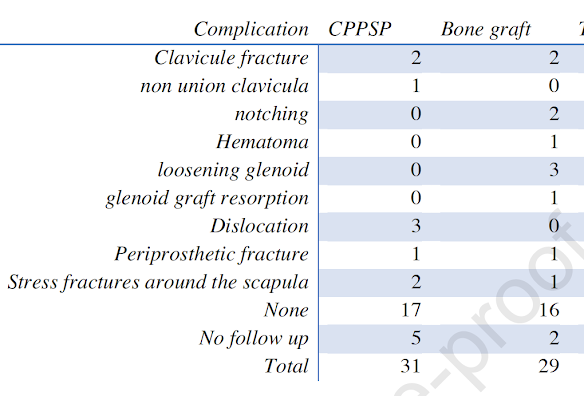Patients with an uncontained glenoid bone defect are being treated with a reverse total shoulder arthroplasty (RTSA). Currently there is a tendency towards a reconstruction using bone grafts. These authors investigated whether central peg positioning in the spine pillar (CPPSP) is a feasible alternative to the use of bone grafts.
They reviewed 60 revisions to a RTSA with uncontained glenoid bone defects ; bone grafts were used in 29 cases and the CPPSP technique in 31 cases. For the CPPSP technique, the K-wire was used to find the longest bony pillar of the spine (the direction was always downward tilted and in anteversion to the native glenoid). Once the pillar was identified, the proximal cortex was perforated with this K-wire. Next, reaming of the glenoid surface was performed until a minimum of 50% of contact area with the baseplate could be reached.
In the CPPSP group the Constant score changed from 42 to 69 points. In the bone graft group it changed from 47 to 60 points. This difference in increase in Constant score was significant, due to a significant difference in strength, in favor of the CPPSP group.
The overall complication rate was 37,7% (20/53) with a reoperation rate of 18,9% (10/53).
Dislocations occurred only in the CPPSP group (n=3) and loosening of the glenoid occurred only in the bone graft group (n=3).
Comment: Two critical elements in the stability of the glenosphere are (1) bony support of the baseplate and (2) secure screw fixation into native bone.
The use of the alternative center line is discussed this link.
To support our research to improve outcomes for patients with shoulder problems, click here.
How you can support research in shoulder surgery Click on this link.
To see our new series of youtube videos on important shoulder surgeries and how they are done, click here.







